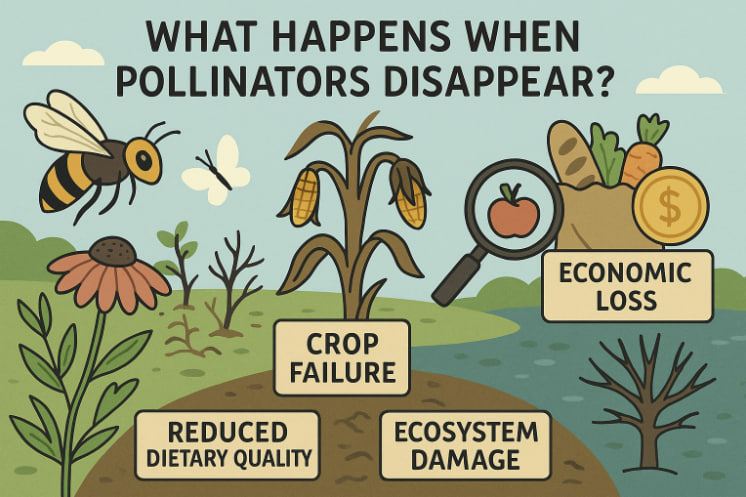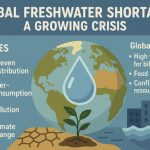Pollinators such as bees, butterflies, beetles, birds, and bats play a crucial role in ecosystems and agriculture by helping plants reproduce. But in recent decades, pollinator populations have been declining sharply due to habitat loss, pesticide use, climate change, and disease. The disappearance of these vital species would have devastating ecological and economic consequences.
Why Pollinators Matter
Pollination is the transfer of pollen from the male part of a flower to the female part, enabling fertilization and seed or fruit development.
- Over 75% of the world’s food crops depend, at least in part, on pollinators.
- This includes fruits, vegetables, nuts, coffee, and cocoa.
- Pollinators also support wild plant reproduction, which maintains soil health and biodiversity.
- They contribute to over $200 billion in annual global agricultural value.
Without them, ecosystems and food systems begin to collapse.
Causes of Pollinator Decline
- Pesticides and Herbicides
- Neonicotinoids and other chemicals impair pollinators’ nervous systems and navigation.
- Herbicides remove wildflowers and other essential food sources.
- Habitat Loss and Fragmentation
- Urbanization, deforestation, and monoculture agriculture reduce natural foraging areas.
- Fewer nesting sites for bees, butterflies, and birds.
- Climate Change
- Alters flowering seasons and disrupts the timing between plant blooms and pollinator activity.
- Increases stress, drought, and temperature extremes.
- Diseases and Parasites
- Mites, fungal infections, and viral pathogens are spreading rapidly, especially among honeybees.
- Invasive Species
- Non-native species outcompete or prey on native pollinators.
Consequences of Pollinator Disappearance
If pollinators vanished, the effects would be immediate and severe:
- Crop failure for apples, almonds, melons, berries, and many vegetables.
- Food prices would rise due to scarcity and hand-pollination labor.
- Nutritional quality of diets would decline—fewer vitamins and antioxidants from plant-based foods.
- Wild ecosystems would lose their reproductive engines, leading to species collapse.
- Livestock industries would suffer indirectly (e.g., fewer alfalfa and clover fields for animal feed).
- Global hunger and food insecurity would increase dramatically.
How We Can Protect Pollinators
- Plant wildflowers and native plants in gardens, parks, and farms.
- Avoid using harmful pesticides and herbicides—especially during bloom periods.
- Support organic and bee-friendly agriculture.
- Protect natural habitats and support pollinator corridors.
- Buy local honey and products from sustainable sources.
- Encourage governments to implement pollinator protection policies.
Even small changes at the local level can support biodiversity and protect food systems.
Glossary
- Pollination — The process of transferring pollen for fertilization and seed production.
- Neonicotinoids — A class of insecticides harmful to bees and other pollinators.
- Biodiversity — The variety of life in an ecosystem, which pollinators help maintain.
- Monoculture — The cultivation of a single crop over a large area, reducing habitat diversity.
- Hand-pollination — Artificial pollination by humans, expensive and labor-intensive.


